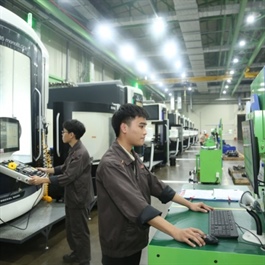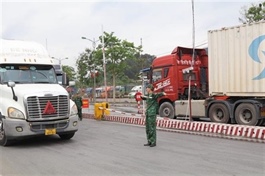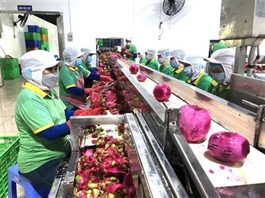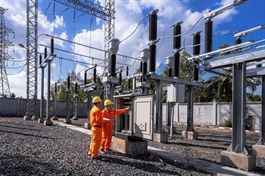Production returns to growth on higher new orders: PMI
Production returns to growth on higher new orders: PMI
The Vietnamese manufacturing sector returned to growth in April on the back of new orders, the S&P Global Vietnam Manufacturing Purchasing Managers’ Index (PMI) has shown.

Production at Maxport Limited Company in Thái Bình Province. PMI rose back above the 50.0 no-change mark in April, posting 50.3 from 48.8 in March, demonstrating a marginal improvement in the health of the manufacturing sector. — VNA/VNS Photo Thế Duyệt |
PMI rose back above the 50.0 no-change mark in April, posting 50.3 from 48.8 in March, demonstrating a marginal improvement in the health of the manufacturing sector.
“The solid expansion in new orders helped lead to a return to growth of manufacturing production in Việt Nam,” S&P said in a press release on Thursday.
The rate of expansion was the fastest since August 2022.
Price discounting recorded for second month running amid efforts of manufacturers to compete for new orders.
“Firms carried out price discounting in spite of a further increase in input costs, but the rate of input price inflation was relatively muted, thereby providing some space for firms to lower charges without incurring too much pressure on margins,” S&P said.
However, employment is down for first time in three months.
“Despite the pick-up in new orders and output in April, recent muted demand conditions led firms to scale back employment for the first time in three months, often reflecting the release of temporary workers,” added S&P.
The report also pointed out that purchasing activity increased for the first time in six months in response to higher new orders, but the rate of expansion was only slight amid a reluctance among firms to hold inventories.
Recent market instability led to a drop in confidence, with sentiment down to a three-month low.
According to Andrew Harker, economics director at S&P Global Market Intelligence, there was a welcome return to growth of new orders in the Vietnamese manufacturing sector during April following recent weakness.
He said: “There were some signs that the extent of the rebound perhaps took firms by surprise given that they had made the decision to release workers following the recent period of muted demand conditions, thus resulting in a build-up of backlogs. We could therefore see some of these workers brought back in the near future.
"More generally, the recent up and down nature of new order inflows was a concern for firms looking forward. We will hopefully see a more stable environment in the months ahead, helping manufacturers to plan production and resourcing effectively.”
Việt Nam’s PMI is still lower than ASEAN’s PMI which was posted at 51.0 in April.
According to economic expert Đinh Trọng Thịnh, besides barriers arising from new business trends such as green credit, renewable energy use, domestic production also faces difficulties in competing with similar products from other countries in the regions due to higher costs.
It is necessary for Việt Nam to innovate to be able to compete with other countries in the race of finding new orders. Manufacturers need to reduce production costs and improve product quality to build competitiveness and create a more solid ground for the recovery of the manufacturing industry, he said.
Exporters need to focus on seeking new markets besides traditional ones, especially markets which Việt Nam has free trade agreements with.


























